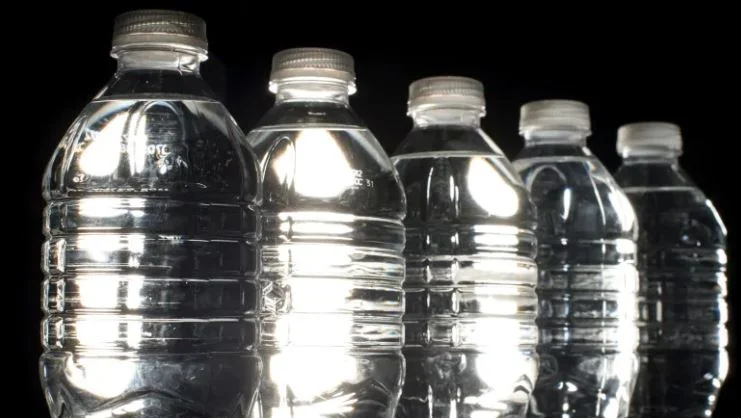Heavy rainfall and isolated thunderstorms are expected to hit pockets throughout the GTA Saturday, which can bring about flash floods, water pools on roads and localized flooding in low-lying areas, Environment Canada warns. The federal weather agency says 50 to 75 millimetres of rain is possible in areas as far west as Guelph to east beyond Kingston. Heavy showers have already begun and are expected to continue on and off throughout the day, with a forecasted end this evening.
Canada would require five Earths to sustain its current resource consumption, destroying children's environments globally - UNICEF Canada
Countries like Canada are creating unhealthy, dangerous and noxious conditions for children worldwide, according to the latest Report Card published today by UNICEF Office of Research - Innocenti. UNICEF Report Card 17 compares how 39 countries fare in providing healthy environments for children. Despite its abundance of wealth and environmental resources, Canada ranks 28th among 39 wealthy countries in the environmental well-being of children and youth.
Stay clear, stay safe this Easter weekend
After a long winter, Easter weekend is a great time to get outside to enjoy the warming weather. But if adventures in the great outdoors are part of your weekend plans, please ensure you stay clear of waterways around OPG hydroelectric facilities. Recent snow melt, combined with spring precipitation, has the potential to cause rising water levels. High water flow, melting snow and ice, and unstable banks along waterways can be especially dangerous at this time of year.
Resident concerned by Roundup use near Guelph Lake
A Guelph resident is concerned about the use of the herbicide Roundup near Guelph Lake after speaking to a worker applying the chemical in the area. Jesse Merrill explained he was driving back from dropping his son off at sailing camp for the day on Tuesday when he spotted a man spraying something on plants growing on the causeway crossing the lake. Through what Merrill termed “a very civil conversation,” he learned the chemical was Roundup and the worker was contracted by the Grand River Conservation Authority (GRCA).
Yukon Southern Lakes residents in 'emergency mode' as water levels rise
Residents in Yukon's Southern Lakes region are bracing for the worst as water levels continue to creep dangerously high. Thousands of sandbags have been filled, and other measures are being taken to minimize any potential damage. In Bennett Lake, Tagish Lake and Marsh Lake water levels rose about 10 centimetres or more in the last 24 hours, according to a Yukon government flood warning issued for the area on Tuesday.
Neskantaga First Nation Still Doesn’t Have Clean Water
This past November marked 25 years since Neskantaga First Nation, located in Northwestern Ontario, was placed on a boil water advisory. In October 2020, over 250 Neskantaga residents were evacuated and transferred to a hotel in Thunder Bay after “an oily sheen was found in the Neskantaga water reservoir;” “high levels of hydrocarbons” were discovered in the water after testing. Residents were able to return after two months, but the boil water advisory remains. Chief Chris Moonias has called upon Ontario Premier Doug Ford to support Neskantaga First Nation in securing clean drinking water and properly trained water operators – Ford has yet to respond. Ending all boil-water advisories in Canada can no longer be delayed; Ford must act in accordance with the concerns of the Neskantaga First Nation immediately.
First Nations communities pursue clean drinking water through the courts
This time of year, with the temperature plunging below -20 C, a snowmobile and an ice chisel are required tools for anyone in Tataskweyak Cree Nation in need of fresh water. There’s the bottled stuff, trucked into town courtesy of the federal government, but the weekly shipment of 1,500 cases is only sufficient to meet basic consumption needs. For cleaning, cooking and basic hygiene water, many residents need a supplementary source. And rather than use their tainted tap water, they follow a snowmobile trail several kilometres to Assean Lake, pails in hand.
Study sheds light on human consumption of microplastics
The study found that a person's average microplastic consumption — based on those food items previously analyzed — would likely be somewhere between 70,000 and 121,000 particles per year. While younger girls were at the lower end of the spectrum, adult men were at the high end. People who consume a lot of bottled water could see that number jump by up to 100,000 particles per year.
A century of water: As Winnipeg aqueduct turns 100, Shoal Lake finds freedom
The taps to Winnipeg's drinking water were first turned on in April 1919, but as the city celebrated its engineering feat and raised glasses of that clear liquid, another community's fortunes suddenly turned dark. Construction of a new aqueduct plunged Shoal Lake 40 into a forced isolation that it is only now emerging from, 100 years after Winnipeg's politicians locked their sights on the water that cradles the First Nation at the Manitoba–Ontario border. "The price that our community has paid for one community to benefit from that resource, it's just mind-boggling," said Shoal Lake 40 Chief Erwin Redsky.










